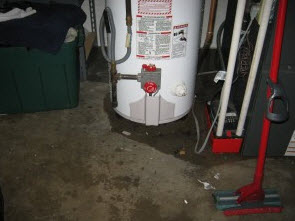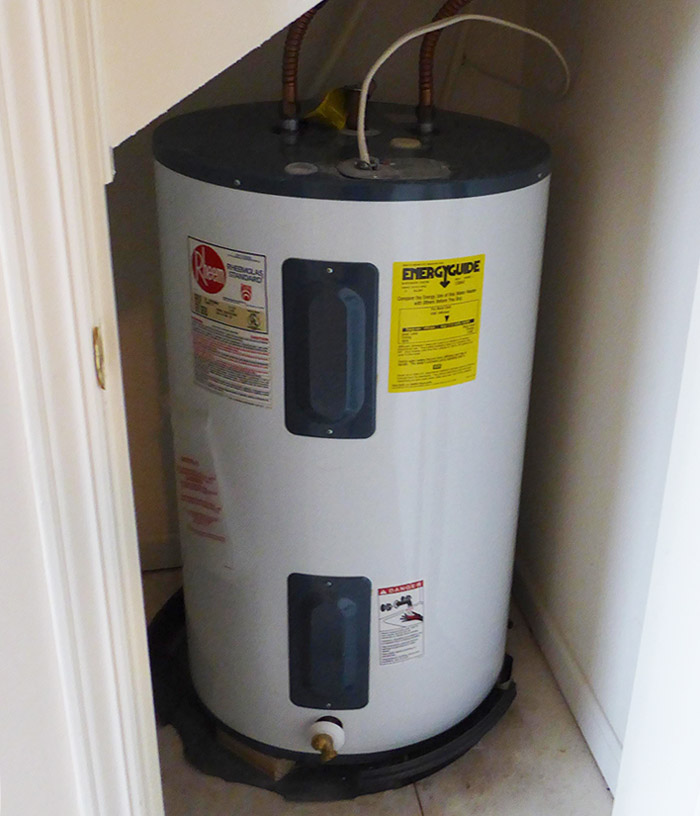Critical Guidance for Homeowners Handling Broken Heating Units
Click HereWhat are your ideas with regards to Maintaining & Draining a Water Heater?

Whether it lies in the basement or a different room, busted hot water heater can cause tension. A basic device holds 80 gallons, so an over night leakage will cause a flooding. This leads to major home damages with drenched wall surfaces and floorings. Besides, having no warm water supply is additionally frustrating. If you are dealing with these issues, bear in mind of the following:
Call the Plumber
After doing the first two security actions, you need to call your plumber to come right away to take care of a ruptured water heater. There are generally indications that your aging water heating system has debris build-up in the interior.
Do not wait for major flooding to call the plumber. By then, you will certainly need to invest more to restore your home. Rather, as soon as you identify these signs, have an expert concerned evaluate your water heater tank. Normally, water heaters have a lifespan of regarding 8 to 12 years. With regular inspection as well as maintenance, you can lengthen its life.
Cut Off the Cold Water Supply
Cut off the storage tanks faucet water supply from the source. This goes from your main water line right into the tank. When your tank remains in good condition, the cold water quits filling out when the tank is full. Because it is leaking, the water will continue to move. Shut the valve located at the top of the heating system. Turn this clockwise to close it off. If you can not find it or reach it, you should shut off that major supply of water line outside your property.
Shut Off Source Of Power
Prior to calling the plumber, turned off a gas hot water heater by turning the temperature level dial. This is generally located at the top of the thermostat. Change off the circuit breaker if you have a model that runs on electrical power. This will protect against electrocution, particularly if there is a leakage as water is a conductor. Normally, the burner shuts down when the water strikes a specific temperature. With a broken container, it might malfunction. Cutting it off assures you remain secure.
Clean Up Residential or commercial property
After calling the plumber, record damage by keeping in mind and photos so you can declare your home owner's insurance coverage. From there, begin the prompt clean-up. Secure any important personal belongings to prevent additional soaking. Remove any kind of standing water to prevent mold and mildew and mold development. If you have a completely submersible water pump, make use of that to drain the water. Or else, the traditional container approach will also work. Attempt to mop out every little thing, including wall surfaces and baseboards. Keep them running to keep air flowing if you have an electrical follower as well as dehumidifier. This will help hinder mold growth.
Bear in mind, if you discover any issues with your water heating unit, call the pros right away. You can not take this issue gently because a malfunctioning thermostat can increase water temperature to an alarmingly high level, leading to unintentional burns.
After doing the very first 2 security steps, you have to call your plumber to come right away to deal with a fractured water heating unit. Rather, as soon as you identify these indicators, have actually a specialist come to evaluate your water heater container. Before calling the plumber, closed off a gas water heater by turning the temperature level dial. If you have a completely submersible water pump, use that to drain pipes the water. Bear in mind, if you see any kind of issues with your water heating unit, call the pros right away.
8 REASONS YOUR HOT WATER HEATER IS NOT WORKING & HOW TO FIX
Water Heater Problems & Solutions
Loose or Damaged In-Line Valve
Unlike a water leak near the bottom of your water tank, a water leak on top of your system can be easily fixed. A common cause of water tank leaks includes a loose in-line valve. This is a handle that is located at the top of the water tank that is engineered to activate or deactivate the flow of water. To fix this problem, you will need to secure the nut that holds the ball or in-line valve in its location. If the leak becomes more severe once it is tightened, you will be required to travel to your local hardware store to purchase a new in-line valve for your water heater.
Damaged Pressure Relief Valve
Most types of water heaters are equipped with a pressure relief valve that is engineered to discharge pressure from the water tank when it becomes too high. If this valve on top of your water heater begins to leak, we recommend purchasing a new one online or from your local store. The process of removing and replacing pressure relief valves is not complicated.
No Warm Water
If you have an electric water heater in your home, the most typical cause of a lack of warm water is a broken heating element. Your water heater is equipped with two heating elements that are tasked with heating incoming water in the water tank. Once a heating element begins to malfunction, you will have little to no hot water to use for showering, cleaning, and laundry.
Low Supply of Hot Water
Are you continuously running out of warm water? This issue may be a byproduct of a cracked dip tube. This tube is engineered to push cold water to the base of your water tank to be heated. Once a crack or hole begins to form in the dip tube, the incoming supply of cold water may be released near the top or middle of your tank. As a result, the cold water on top of the tank will be sent to the faucets and showers in your house. This hot water heater problem can only be fixed by replacing the dip tube on your system. Since the process of installing a new dip tube is complex, we recommend calling a certified technician for help.
A low supply of warm water may also be a signal of excess sediment buildup in your water tank. As your water heater reaches the middle of its life cycle, minerals in water including magnesium and calcium will begin to collect at the base of the water tank. As the minerals continue to grow, there will be less room in the water tank to store hot water. To resolve this problem, flush your water heater to remove the excess minerals.
Water is Too Warm or Cold
If the water in your shower feels uncomfortable hot or cold, you can adjust the temperature of your water by changing the settings on your thermostat. Setting the temperature to 120 degrees Fahrenheit may help you save money on your utility bills. This is an excellent temperature to use if you’re worried about scalding or skin irritation. Does this temperature feel too cold? You may also adjust the thermostat to 140 degrees Fahrenheit to make your showers more pleasant. If your hot water heater is not working when you change the temperature, this is an indicator of a broken thermostat. Immediately find a certified plumbing or heating contractor in your area to repair or replace your thermostat.
Low Water Pressure
Low water pressure is not always caused by a malfunctioning water heater. If you live in an older home with smaller water pipes, the flow of water will be restricted prior to reaching our kitchen or bathroom skins. The only way to eliminate this hot water heater problem is to connect new ¾-inch water lines to your system. Another type of problem that may negatively impact your water pressure includes calcium deposits in water pipes.
As magnesium and calcium begin to form in your pipes, the diameter of your water lines will become smaller. As a result, the warm water from your water heater will not be able to travel in an efficient manner to your sinks or appliances. Since the process of replacing water pipes includes removing drywall, an average homeowner that does not have a plumbing license will not be able to fix this hot water heater problem.
https://www.wmhendersoninc.com/blog/8-reasons-your-water-heater-is-not-working-how-to-fix/

Do you really like reading up on Water Heater Repair? Leave feedback directly below. We will be interested to hear your views about this post. Hoping that you come back again soon. If you please take a moment to distribute this page if you enjoyed reading it. Many thanks for your time invested reading it.
Burst pipes? Get immediate help.